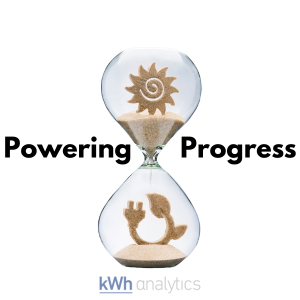Winds of Change
Leveling up wind risk allocation with financial engineering
I have some big news that will be impacting renewable energy project finance: kWh Analytics, along with Munich Re and MUFG, have just closed on a groundbreaking new structure - the Wind Proxy Hedge structured with the kWh Analytics “Indifference Structure” - for a 59 MW wind project in Maine, developed by Greenbacker Capital Management. Notably, the Wind Proxy Hedge creates a floor on revenues tied to a lack of wind resource and provides lenders with additional cash flows when considering downside debt sizing cases.
This is the first wind project for kWh Analytics and presents a new avenue of growth for insurance applications into the project finance market.
Wind projects have always been tricky to finance. The wind's variability makes lenders nervous, often resulting in conservative debt sizing. The Wind Proxy Hedge structure tackles this head-on by essentially putting a floor on wind speed.
Here's how it works: If wind speed (measured at a nearby proxy location) drops below a predetermined level, the hedge compensates for the shortfall. We've paired this with the kWh Analytics "Indifference Structure" for debt sizing, calibrating the hedge so that the project's P99 scenario (a financing’s worst-case scenario) ceases to be a limiting factor for debt sizing. As a result, the developer secured about 20% more debt than they would have otherwise.
The wind project pays an upfront premium to purchase the hedge, and the hedge counterparty pays when there is a shortfall in wind speed
The wind project pays an upfront premium to purchase the hedge, and the hedge counterparty pays when there is a shortfall in wind speed.
The value creation comes from the more efficient allocation of a project’s risks. Debt providers are not the best holders of risks as volatile as wind speed; if a worst-case scenario is realized, the resulting insolvency is costly for all involved. Hedge providers in contrast can simply pay a claim, relying on multiple decades of historical wind data to forecast and price said risk. While this may sound like complex financial engineering, its implications for accelerating the clean energy transition are real and important. By making wind projects more bankable to investors and lenders, we're helping to get more turbines in the ground faster.
Importantly, this structure is replicable. The enabling satellite wind data can be used anywhere in the world, and we're consulting with Munich Re about implementing similar hedges on future projects. Any project financing currently limited by wind resource volatility should benefit from this structure; that's likely the vast majority of them.
This innovation represents a pivotal moment in climate finance. As we continue to develop and refine these structures, we're opening new pathways for renewable energy project development. Stay tuned for more developments in this space - I believe we're just scratching the surface of what's possible.
As always, I'm eager to hear your thoughts. Drop a comment or reach out to our Head of Accounts, Geoffrey Lehv if you want to dive deeper into the details.
May the winds of innovation be at our backs!
Read the Press Release: https://learn.kwhanalytics.com/xZRFr


